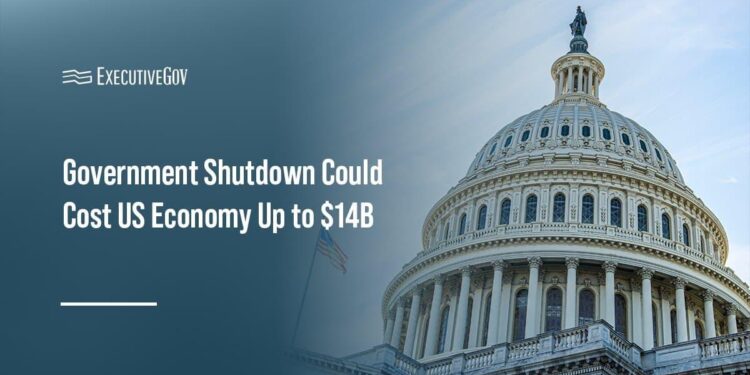A potential federal government shutdown looms as negotiations stall in Washington, raising concerns over significant economic repercussions. According to a new Reuters analysis, the disruption could cost the U.S. economy up to $14 billion, impacting federal employees, contractors, and a broad range of public services. As lawmakers grapple with deep budgetary disagreements, the prospect of halted government operations underscores growing uncertainty amid an already fragile economic landscape.
Economic Impact of Federal Shutdown Looms Large on Key Sectors
The potential federal shutdown threatens to deliver a heavy blow to several critical sectors within the United States economy. Financial services, manufacturing, and retail stand to experience immediate disruptions, with decreased consumer spending and halted government contracts undermining growth projections. Businesses that rely on government permits and oversight are already bracing for delays, leading to cascading effects on supply chains and employment rates. Analysts warn that prolonged uncertainty could erode investor confidence, further dampening economic activity during an already fragile recovery period.
Key areas expected to be hit hardest include:
- Public health programs facing funding interruptions
- Transportation and infrastructure projects losing momentum
- Federal worker paychecks being delayed, reducing consumer purchasing power
- Small businesses dependent on federal contracts seeing cash flow issues
| Sector | Estimated Loss (in billions) | Impact Duration |
|---|---|---|
| Financial Services | $4.2 | Short-term |
| Manufacturing | $3.6 | Medium-term |
| Retail | $2.8 | Short-term |
| Transportation | $1.5 | Long-term |
| Public Health | $1.9 | Medium-term |
Government Services Face Disruptions Threatening Public and Business Confidence
As the federal government braces for a possible shutdown, critical services are increasingly vulnerable to interruptions, threatening the smooth operation of both public programs and private sector activities. Essential agencies may experience furloughs or delayed operations, affecting everything from social security disbursements to regulatory approvals. This growing uncertainty is prompting businesses to revise forecasts and consumers to hesitate on significant expenditures, eroding trust in government efficacy at a time when stability is paramount.
The economic ripple effect could be extensive. Key areas expected to bear the brunt include:
- Disrupted payrolls for federal employees and contractors
- Delays in permits and licensing affecting multiple industries
- Reduced oversight and enforcement of safety and environmental regulations
- Slower processing of tax refunds and government benefits
| Sector | Impact | Estimated Financial Loss |
|---|---|---|
| Federal Workforce | Furloughs / Pay delays | $3 billion |
| Business Licensing | Processing slowdowns | $2.5 billion |
| Consumer Benefits | Delayed payments | $4 billion |
| Regulatory Agencies | Enforcement reduced | $4.5 billion |
Policy Experts Urge Swift Resolution and Contingency Planning to Mitigate Financial Fallout
Policy specialists emphasize the urgent need for lawmakers to reach a consensus to avoid prolonged interruptions that could exacerbate economic instability. The looming federal shutdown threatens not only government services but also ripple effects across private sectors, potentially halting critical programs and delaying payments. Economists warn that without prompt action, the economy could face setbacks including slowed consumer spending, halted infrastructure projects, and increased borrowing costs.
In light of the potential disruption, experts recommend the following contingency measures to soften the blow:
- Activate emergency funds to maintain essential government functions.
- Enhance communication channels between federal agencies and financial markets.
- Implement partial operations plans to prioritize critical services.
- Encourage private sector partnerships to support vulnerable supply chains.
| Economic Sector | Potential Impact | Recommended Action | |||||||||||||
|---|---|---|---|---|---|---|---|---|---|---|---|---|---|---|---|
| Consumer Spending | Decrease by up to 0.5% | Stimulus communication | |||||||||||||
| Government Payroll | Delayed payments for 1.2 million workers | Emergency wage provisions | |||||||||||||
Infrastructure Projects It looks like your table got cut off at the “Infrastructure Projects” row. Here’s a completed version of that row along with the full table formatted consistently:
If you want, I can help you with further edits, summaries, or formatting! In RetrospectAs negotiations continue on Capitol Hill, the potential economic fallout from a federal shutdown remains a pressing concern for policymakers and businesses alike. With estimates projecting losses of up to $14 billion, the stakes are high not only for government operations but for the broader U.S. economy. Stakeholders will be closely monitoring developments in the coming days as efforts to avoid a shutdown enter a critical phase. |






























